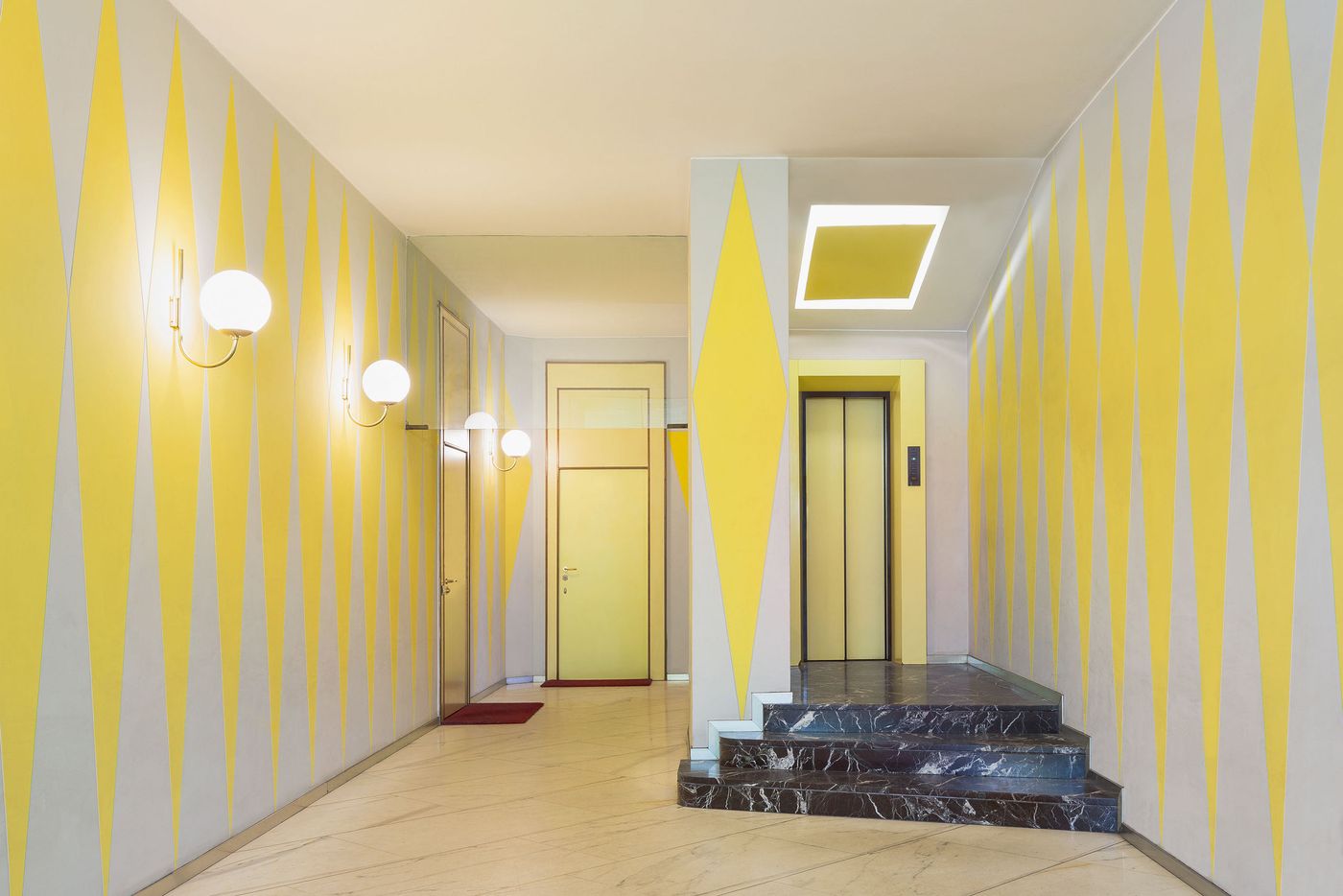
Making an Entrance: A Visual Tour of Milan’s Splendid Entryways by Karl Kolbitz
Words by Kiriakos Spirou
Location
Milan, Italy
Making an Entrance: A Visual Tour of Milan’s Splendid Entryways by Karl Kolbitz
Words by Kiriakos Spirou
Milan, Italy
Milan, Italy
Location
First impressions are sometimes all that matters, something that Italian architects seem to know very well. The new book Ingressi di Milano by Karl Kolbitz and Taschen is a luscious documentation of how Milanese entryways stand as fine examples of midcentury modernism, also using colour, form and design to generate emotional responses and a dramatic sense of arrival. The 384-page tome features photography by Matthew Billings, Delfino Sisto Legnani and Paola Pansini, who took photos of the finest ingressi and captured their architectural beauty as well as their timeless allure. No less than 144 entryways have been documented, and presented with photos of their overall design as well as details of their materials and decor elements — the latter including artworks, door handles, rare stones and other details that reveal how much thought and effort has been put into designing these spaces. What strikes us is that the pomp and meticulousness of these ingressi comes in contrast with their function as transitory spaces, where in fact one never lingers but simply passes through momentarily to either enter or exit.
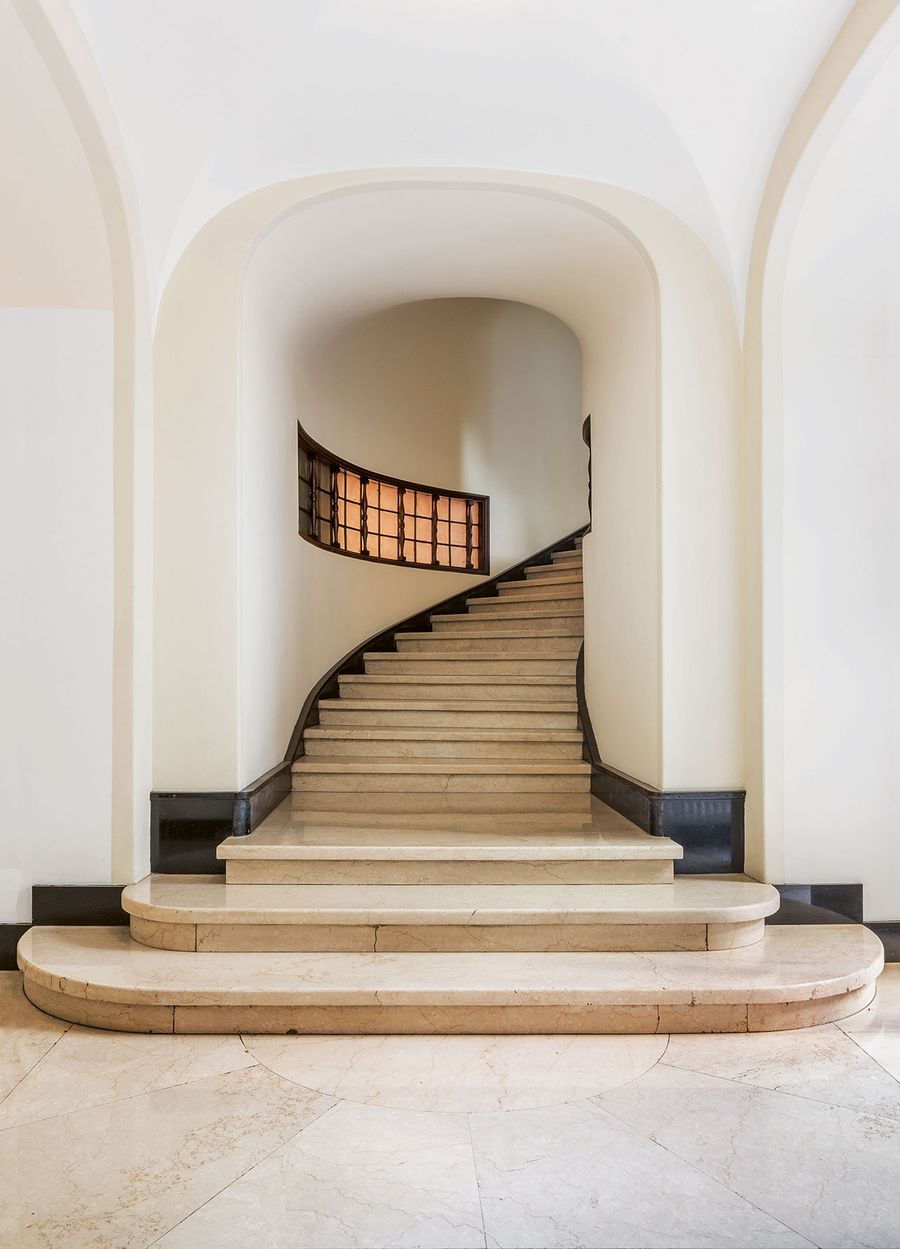
Palazzo Sola-Busca, Aldo Andreani, 1924–30. Stairs: Botticino limestone. Photo © Delfino Sisto Legnani.
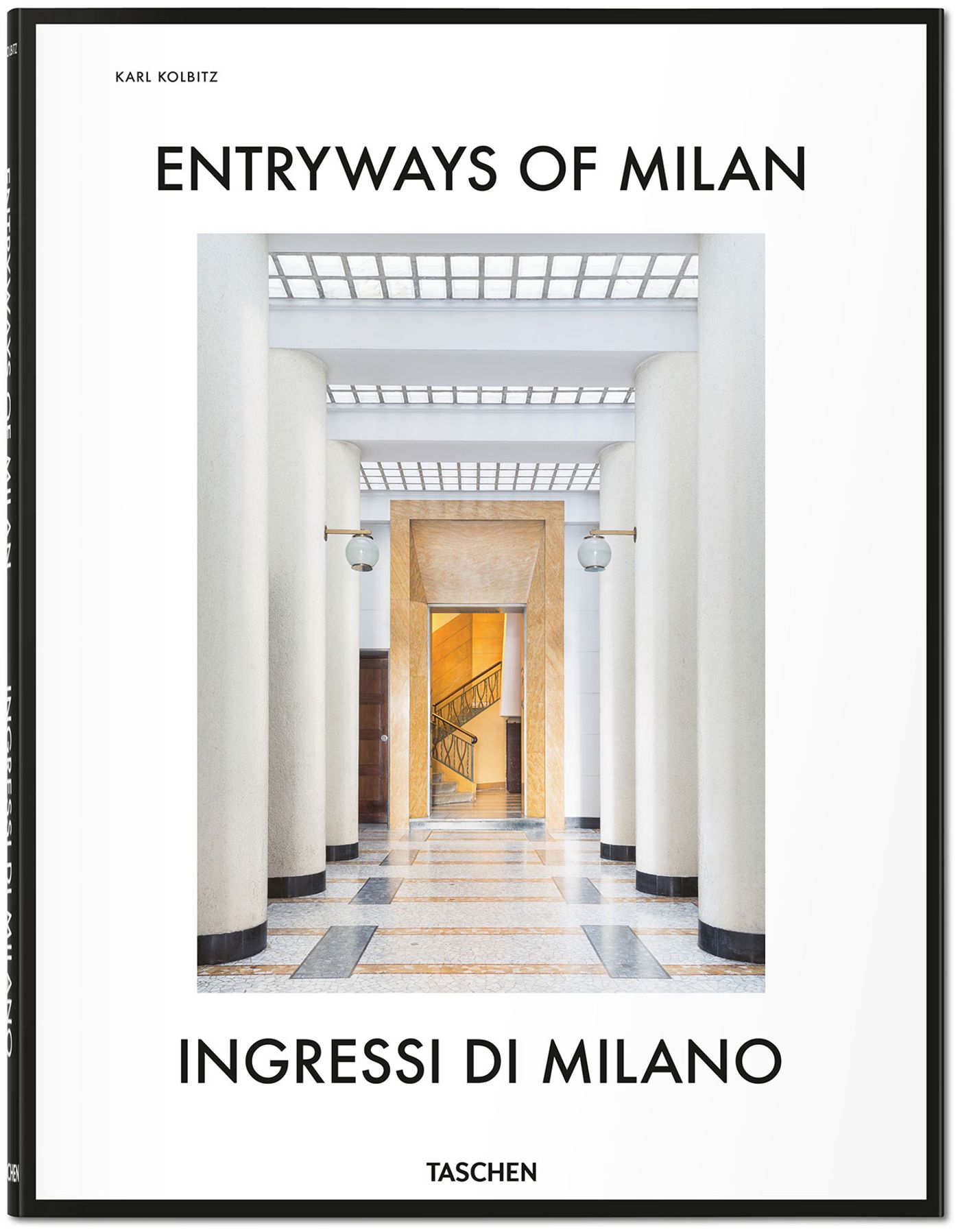
Entryways of Milan – Ingressi di Milano, book cover © Taschen.

Entryways of Milan – Ingressi di Milano, book spread © Taschen.
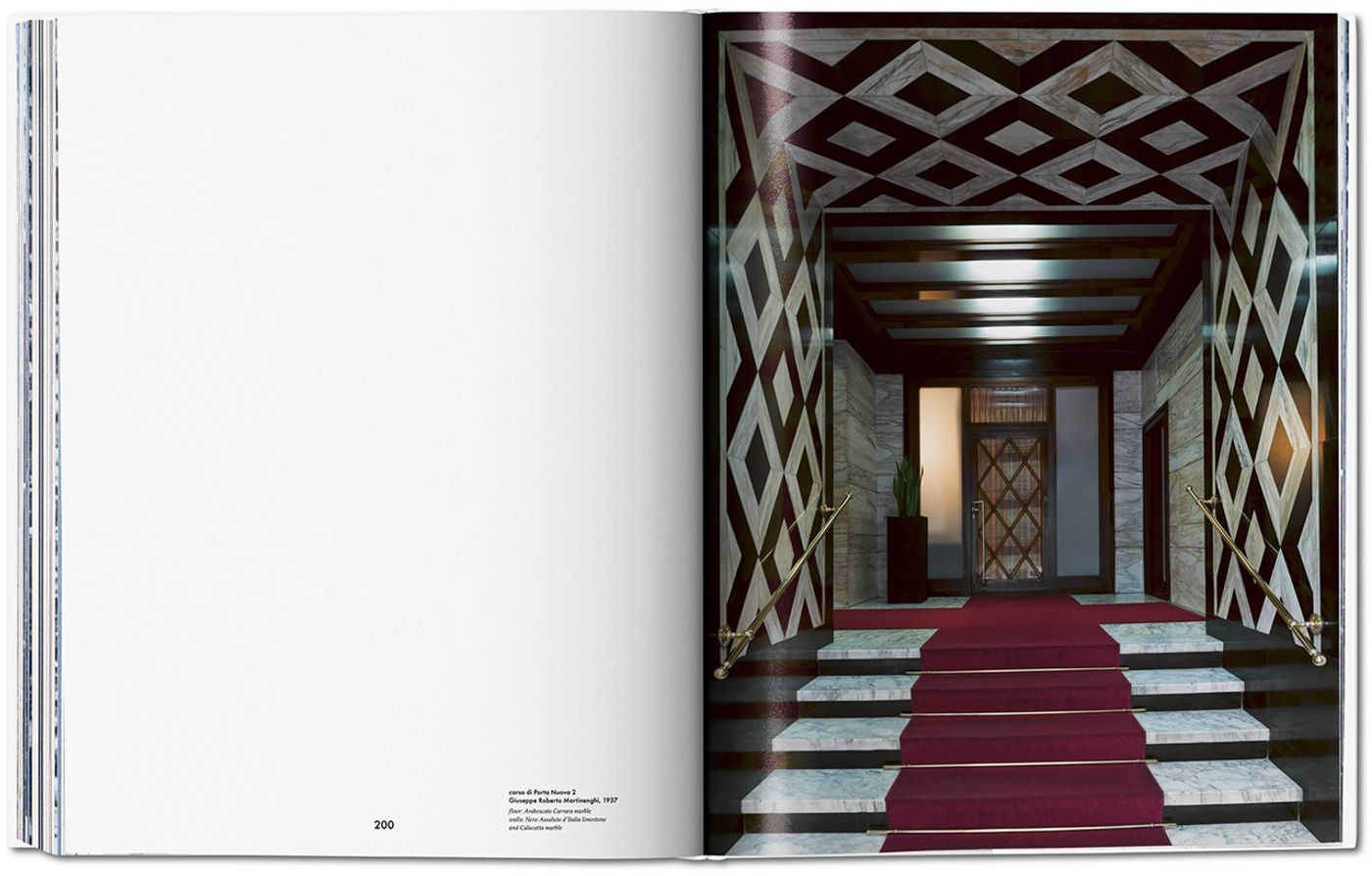
Entryways of Milan, book spread © Taschen.

Giuseppe Roberto Martinenghi, 1937. Floor: Arabescato Carrara marble. Walls: Nero Assoluto d’Italia limestone and Calacatta marble. Photo © Paola Pansini
“Few conventions of architecture are as omnipresent, and at the same time as taken for granted, as the threshold”, muses Daniel Sherer in his contributing essay for the tome. Indeed, a building’s entryway is both prominent and overlooked, depending on who’s looking and for what reason. Evidently looking for signs of great architecture and design when exploring Milan, Karl Kolbitz definitely found them in these entryways where pleasing proportions, clever use of lighting, well-tended plants and ingenious architectural details betray the refinement and sophistication of a society that both appreciated and fostered modern design in its most quintessential — one is tempted to say classical — form.

Entryways of Milan – Ingressi di Milano, book spread © Taschen.
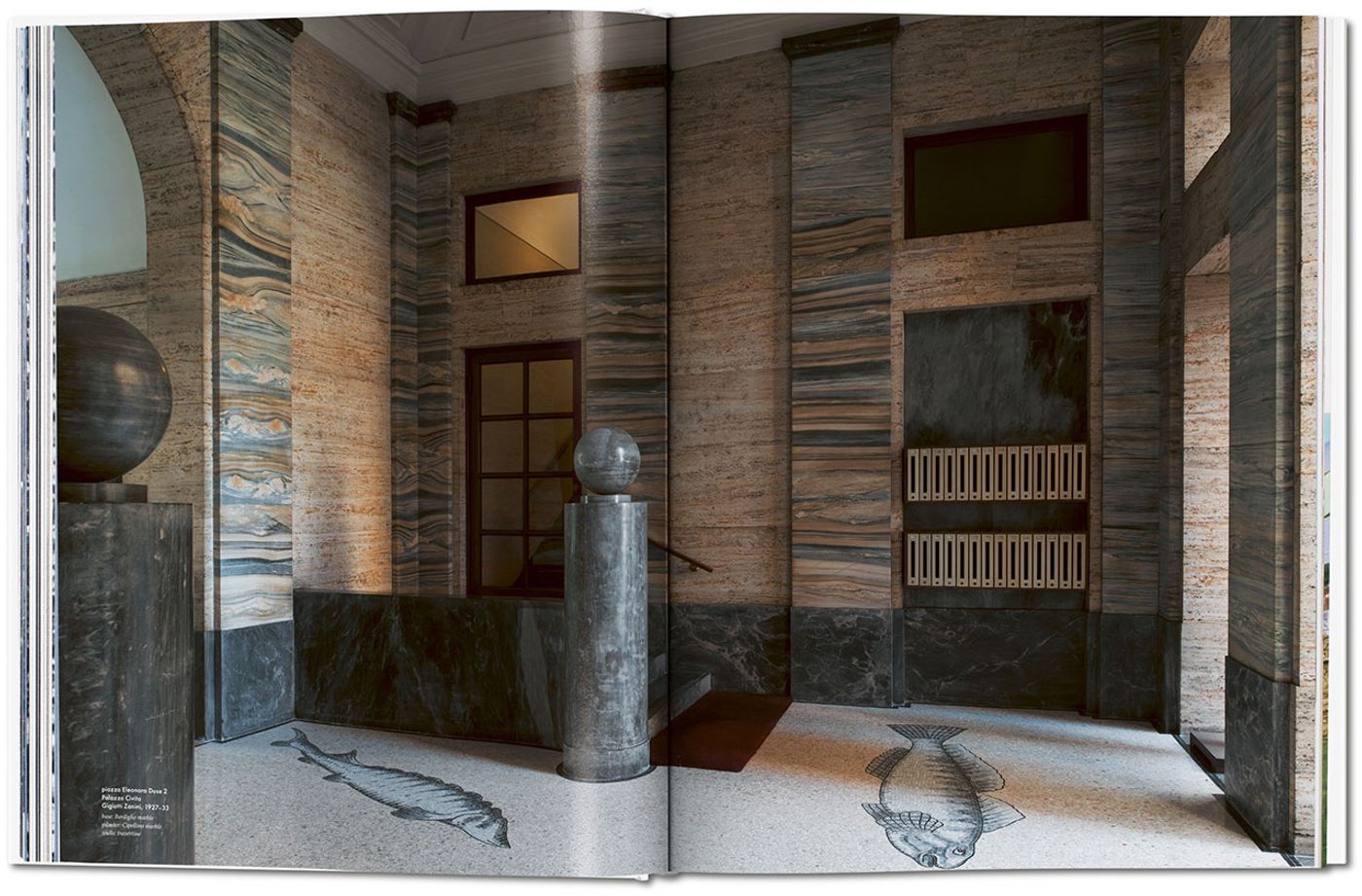
Entryways of Milan – Ingressi di Milano, book spread © Taschen.
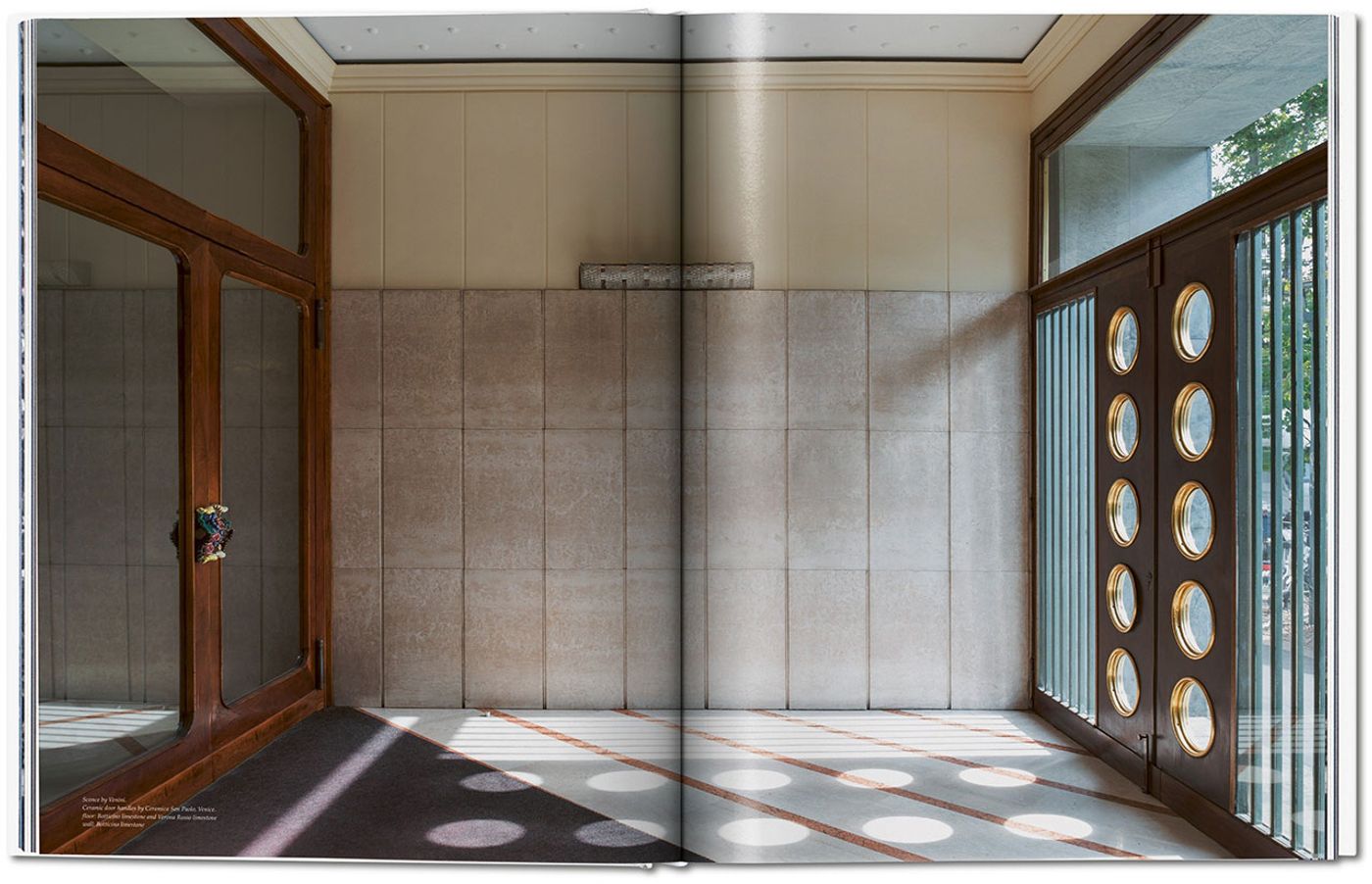
Entryways of Milan – Ingressi di Milano, book spread © Taschen.
The ingressi of Milan are therefore a threshold in a double sense: on the one hand they serve an architectural function of connecting the public to the private, and on the other they offer us a glimpse into the past, and the glorious era of Italian modernism. An additional amazing feature of the book is the detailed map of Milan pointing out the location of each of the 144 ingressi, which allows readers to head out and discover these hidden gems on their own. Sounds like the perfect ‘treasure hunt’ challenge for an architecture-savvy flâneur’s next trip to the world’s capital of design.

Gio Ponti, Antonio Fornaroli, Alberto Rosselli, 1952–56. Sconce by Gio Ponti. Floor: Serpentinite Verde Acceglio, Porta Santa limestone, Carrara Bardiglio marble, Carrara Bianco marble. Photo © Delfino Sisto Legnani.

Entryways of Milan – Ingressi di Milano, book spread © Taschen.